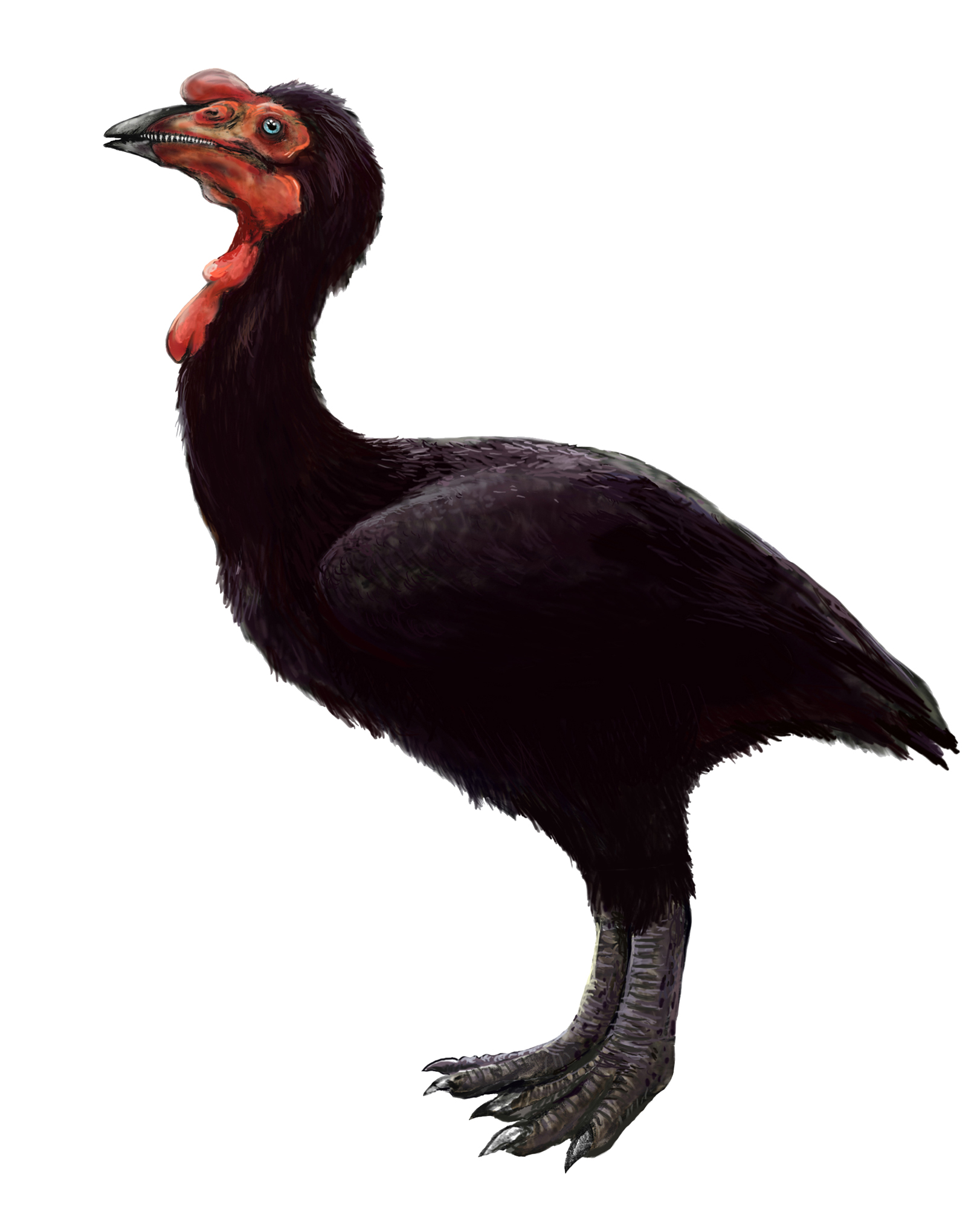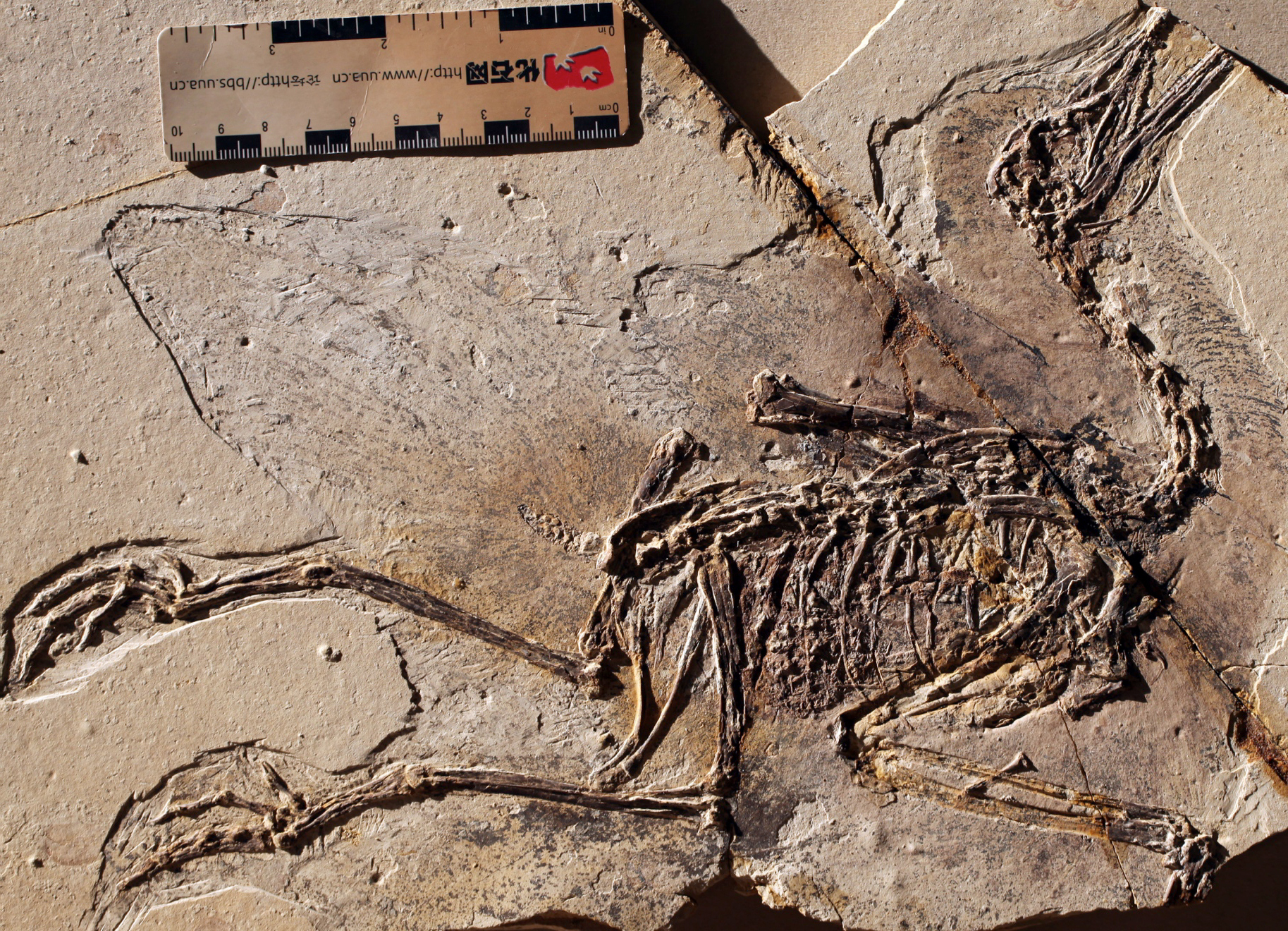|
Schizoouridae
Schizoouridae is an extinct family of euornithean theropods that lived in what is now China during the Early Cretaceous. It was named in 2019 by Wang and colleagues, and contains all taxa more closely related to ''Mengciusornis dentatus'' and '' Schizooura lii'' than to '' Bellulornis'' or '' Jianchangornis microdonta''. Members of the family possessed several features that are rarely found in euornitheans, but are more typical of enantiornitheans and more basal groups. These include a robust furcula with a prominent hypocleidium, and (in ''Mengciusornis'') teeth at the tip of the premaxilla The premaxilla (or praemaxilla) is one of a pair of small cranial bones at the very tip of the upper jaw of many animals, usually, but not always, bearing teeth. In humans, they are fused with the maxilla. The "premaxilla" of therian mammal has .... Classification The cladogram below follows Wang ''et al.'' (2019): References Prehistoric euornitheans Prehistoric dinosaur fa ... [...More Info...] [...Related Items...] OR: [Wikipedia] [Google] [Baidu] |
Mengciusornis
''Mengciusornis'' is an extinct genus of basal ornithuromorphs from the Early Cretaceous of China. It contains one species, ''M. dentatus'', remains of which have been found in the Jiufotang Formation. Together with the closely related ''Schizooura'' it makes up the family Schizoouridae. Description ''Mengciusornis'' is known from a single specimen, IVPP V26275, a well-preserved skeleton with remains of feathers. Unlike its sister genus ''Schizooura'', which was toothless, ''Mengciusornis'' possessed large, curved teeth on its premaxillae, similar to those of the distantly related ''Longipteryx''. Etymology The generic name honours the Chinese philosopher Mencius, while the specific epithet In taxonomy, binomial nomenclature ("two-term naming system"), also called nomenclature ("two-name naming system") or binary nomenclature, is a formal system of naming species of living things by giving each a name composed of two parts, bot ... is Latin for "toothed". Reference ... [...More Info...] [...Related Items...] OR: [Wikipedia] [Google] [Baidu] |
Euornithean
Euornithes (from Greek ' meaning "true birds") is a natural group which includes the most recent common ancestor of all avialans closer to modern birds than to ''Sinornis''. Description Clarke ''et al''. (2006) found that the most primitive known euornithians (the Yanornithiformes) had a mosaic of advanced and primitive features. These species retained primitive features like gastralia and a pubic symphysis. They also showed the first fully modern pygostyles, and the type specimen of ''Yixianornis'' (IVPP 13631) preserves eight elongated rectrices (tail feathers) in a modern arrangement. No earlier pygostylians are known which preserve a fan of tail feathers of this sort; instead, they showed only paired plumes or a tuft of short feathers. Classification The name Euornithes has been used for a wide variety of avialan groups since it was first named by Edward Drinker Cope in 1889. It was first defined as a clade in 1998 by Paul Sereno, who made it the group of all animals closer ... [...More Info...] [...Related Items...] OR: [Wikipedia] [Google] [Baidu] |
Ornithuromorpha
Euornithes (from Greek ' meaning "true birds") is a natural group which includes the most recent common ancestor of all avialans closer to modern birds than to ''Sinornis''. Description Clarke ''et al''. (2006) found that the most primitive known euornithians (the Yanornithiformes) had a mosaic of advanced and primitive features. These species retained primitive features like gastralia and a pubic symphysis. They also showed the first fully modern pygostyles, and the type specimen of '' Yixianornis'' (IVPP 13631) preserves eight elongated rectrices (tail feathers) in a modern arrangement. No earlier pygostylians are known which preserve a fan of tail feathers of this sort; instead, they showed only paired plumes or a tuft of short feathers. Classification The name Euornithes has been used for a wide variety of avialan groups since it was first named by Edward Drinker Cope in 1889. It was first defined as a clade in 1998 by Paul Sereno, who made it the group of all animals clos ... [...More Info...] [...Related Items...] OR: [Wikipedia] [Google] [Baidu] |
Mengciusornis Dentatus
''Mengciusornis'' is an extinct genus of basal ornithuromorphs from the Early Cretaceous of China. It contains one species, ''M. dentatus'', remains of which have been found in the Jiufotang Formation. Together with the closely related ''Schizooura'' it makes up the family Schizoouridae. Description ''Mengciusornis'' is known from a single specimen, IVPP V26275, a well-preserved skeleton with remains of feathers. Unlike its sister genus ''Schizooura'', which was toothless, ''Mengciusornis'' possessed large, curved teeth on its premaxillae, similar to those of the distantly related '' Longipteryx''. Etymology The generic name honours the Chinese philosopher Mencius, while the specific epithet In taxonomy, binomial nomenclature ("two-term naming system"), also called nomenclature ("two-name naming system") or binary nomenclature, is a formal system of naming species of living things by giving each a name composed of two parts, bot ... is Latin for "toothed". Refere ... [...More Info...] [...Related Items...] OR: [Wikipedia] [Google] [Baidu] |
Yixianornis
''Yixianornis'' (meaning "Yixian Formation bird") is a bird genus from the early Cretaceous period. Its remains have been found in the Jiufotang Formation at Chaoyang (People's Republic of China) dated to the early Aptian age, around 120 million years ago. Only one species, ''Yixianornis grabaui'', is known at present. The specific name, ''grabaui'', is named after American paleontologist Amadeus William Grabau, who surveyed China in the early 20th century. Description The type specimen (and only specimen found to date) of ''Yixianornis'', catalog number IVPP V12631 in the collections of the Institute of Vertebrate Paleontology and Paleoanthropology, is one of the most well-preserved bird fossils known from the Jehol group. It is nearly complete and, unlike many other fossils, the bones are mostly uncrushed and were not split in half when the stone slabs were initially separated. It is also one of the few known Mesozoic ornithuran bird specimens that preserve clear impressions ... [...More Info...] [...Related Items...] OR: [Wikipedia] [Google] [Baidu] |
Hongshanornithidae
Hongshanornithidae is an extinct group of early ornithuromorph birds from the early Cretaceous period of China. It includes the genera ''Hongshanornis'' (the type genus) and ''Tianyuornis'' from the Yixian Formation of Inner Mongolia, ''Longicrusavis'' from the Yixian Formation of Liaoning Province, ''Parahongshanornis'' from the Jiufotang Formation of Liaoning Province, and ''Archaeornithura'', the oldest known member, from the Huajiying Formation of Hebei Province Hebei or , (; alternately Hopeh) is a northern province of China. Hebei is China's sixth most populous province, with over 75 million people. Shijiazhuang is the capital city. The province is 96% Han Chinese, 3% Manchu, 0.8% Hui, and .... Description Hongshanornithids were small, approximately the size of modern phoebes. Their legs are proportionally long in comparison to the wings, suggesting that they were aquatic wading birds. They most likely lacked beaks and had teeth in their jaws. Classifi ... [...More Info...] [...Related Items...] OR: [Wikipedia] [Google] [Baidu] |
Songlingornis
''Songlingornis'' is a prehistoric bird Birds are a group of warm-blooded vertebrates constituting the class Aves (), characterised by feathers, toothless beaked jaws, the laying of hard-shelled eggs, a high metabolic rate, a four-chambered heart, and a strong yet lightweig ... genus from the Early Cretaceous. Its fossils have been found in the Jiufotang Formation of Liaoning (People's Republic of China, PRC). The age of these rocks is somewhat disputed, but probably around the early Aptian, 125-120 million years ago. Only one species, ''Songlingornis linghensis'', is known at present. It was a close relative of ''Yanornis'' and together with this and ''Yixianornis'' forms a clade of early modern birds. It is sometimes considered to be the same genus as ''Yanornis'' (which, described after ''Songlingornis'', would then be merged into that taxon), but this is not universally accepted.Mortimer (2004) Footnotes References * (2006): Insight into the evolution of a ... [...More Info...] [...Related Items...] OR: [Wikipedia] [Google] [Baidu] |
Yanornis
''Yanornis'' () is an extinct genus of fish-eating Early Cretaceous birds. Two species have been described, both from Liaoning province, China: ''Yanornis martini'', based on several fossils found in the 120-million-year-old Jiufotang Formation at Chaoyang, and ''Yanornis guozhangi'', from the 124-million-year-old Yixian Formation. Description ''Y. martini'' was the size of a chicken,Holtz, Thomas R. Jr. (2011) ''Dinosaurs: The Most Complete, Up-to-Date Encyclopedia for Dinosaur Lovers of All Ages,'Winter 2010 Appendix./ref> had a long skull with about 10 teeth in the upper jaw and 20 teeth in the lower jaw, and was both able to fly and walk well, having a well-developed U-shaped furcula (wishbone). The absence of the prefrontal bone and the non-diapsid skull allows ''Yanornis'' to be classified as an ornithuromorph, a member of a group of stem-birds which also includes the common ancestor of living birds. Similarly, its scapula and coracoid had evolved the basic shape and layo ... [...More Info...] [...Related Items...] OR: [Wikipedia] [Google] [Baidu] |
Piscivoravis
''Piscivoravis'' is an extinct genus of fish-eating ornithuromorphs known from the Early Cretaceous Jiufotang Formation (Aptian age) of western Liaoning Province, northeastern China. ''Piscivoravis'' was first named by Shuang Zhou, Zhonghe Zhou and Jingmai O'Connor in 2013 and the type species is ''Piscivoravis lii''. Phylogenetic analysis places ''Piscivoravis'' in a more derived position than ''Archaeorhynchus'', in a polytomy with '' Jianchangornis'', ''Patagopteryx ''Patagopteryx'' is an extinct monotypic genus of patagopterygiforms that lived during the Late Cretaceous, around 80 mya, in what is now the Sierra Barrosa in northwestern Patagonia, Argentina. About the size of a chicken, it is the earliest ...'', and the clade including all more derived ornithuromorphs. References {{Taxonbar, from=Q16757520 Bird genera Early Cretaceous birds of Asia Fossil taxa described in 2013 Paleontology in Liaoning Songlingornithids ... [...More Info...] [...Related Items...] OR: [Wikipedia] [Google] [Baidu] |
Aptian
The Aptian is an age in the geologic timescale or a stage in the stratigraphic column. It is a subdivision of the Early or Lower Cretaceous Epoch or Series and encompasses the time from 121.4 ± 1.0 Ma to 113.0 ± 1.0 Ma (million years ago), approximately. The Aptian succeeds the Barremian and precedes the Albian, all part of the Lower/Early Cretaceous. The Aptian partly overlaps the upper part of the Western European Urgonian Stage. The Selli Event, also known as OAE1a, was one of two oceanic anoxic events in the Cretaceous Period, which occurred around 120 Ma and lasted approximately 1 to 1.3 million years. The Aptian extinction was a minor extinction event hypothesized to have occurred around 116 to 117 Ma.Archangelsky, Sergio.The Ticó Flora (Patagonia) and the Aptian Extinction Event" ''Acta Paleobotanica'' 41(2), 2001, pp. 115-22. Stratigraphic definitions The Aptian was named after the small city of Apt in the Provence region of France, which is also known for ... [...More Info...] [...Related Items...] OR: [Wikipedia] [Google] [Baidu] |
Vorona
''Vorona'' ( ; Malagasy for "bird", ''V. berivotrensis'', "from Berivotra") is a monotypic genus of prehistoric birds. It was described from fossils found in a Maevarano Formation quarry near the village of Berivotra, Mahajanga Province, Madagascar. The age of the fossilised specimen is Late Cretaceous, probably Maastrichtian (72.1-66.0 mya). ''V. berivotrensis'' is known from scattered remains, possibly from a single individual ( UA 8651 and FMNH PA715). The phylogenic affinity of ''Vorona'' is hard to determine due to the fragmentary nature of the remains, mainly because the fossil shows a mix of basal avian features as well as some that seem very derived. ''Vorona'' might be a primitive ornithuromorph. At least two studies recovered it as part of Enantiornithes, however. ''Vorona'' is sometimes confused with the dromaeosaur ''Rahonavis ostromi'', a fossil of which was found in the same location. This confusion has led to the common misconception that ''Vorona'' had ... [...More Info...] [...Related Items...] OR: [Wikipedia] [Google] [Baidu] |



